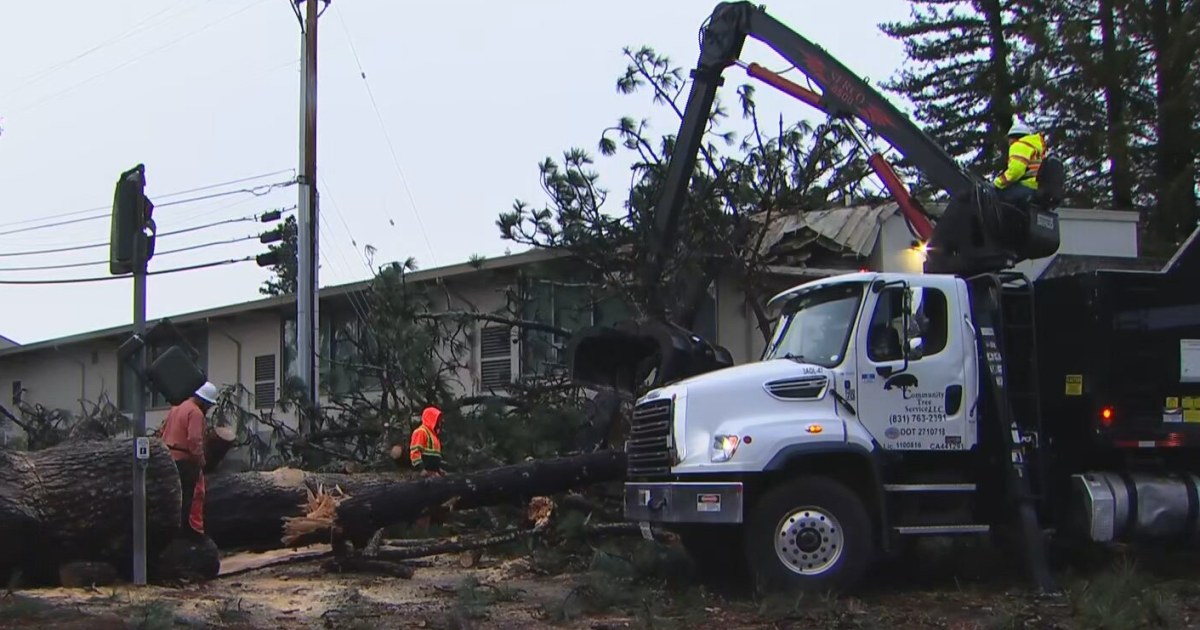Rare Tornado Strikes Northern California: An Unforeseen Weather Event
In a surprising turn of events, Northern California experienced a rare tornado that left five individuals injured and caused extensive damage in the region. This unusual weather phenomenon has raised alarm bells among meteorologists and residents alike, sparking discussions about the implications of climate change and the increasing frequency of extreme weather events. As communities begin to assess the aftermath, it is essential to delve into the factors that contributed to this tornado, the damage inflicted, and what it means for the future of weather patterns in California.
The Tornado Event: What Happened
On a day that began with typical weather for the region, an unexpected storm system developed, leading to the formation of a tornado that touched down in several communities in Northern California. Eyewitness accounts describe a whirlwind of debris and chaos as the tornado flipped vehicles, uprooted trees, and caused structural damage to homes and businesses. The local emergency services responded promptly, tending to the injured and ensuring the safety of residents as the storm passed.
The five individuals who sustained injuries were quickly transported to nearby hospitals, where they received treatment for non-life-threatening conditions. Local authorities have been conducting assessments to evaluate the extent of the damage and to understand the factors that contributed to this rare occurrence.
Understanding Tornado Formation in California
Tornadoes are typically associated with the central United States, particularly in the region known as “Tornado Alley.” However, tornadoes can and do occur in California, albeit infrequently. The conditions that lead to tornado formation include:
- Warm, moist air: This is often necessary for the development of severe thunderstorms.
- Strong winds at different altitudes: Wind shear, or the change in wind direction and speed with height, plays a crucial role in tornado formation.
- Instability in the atmosphere: Factors such as temperature differences can contribute to the development of severe storms capable of producing tornadoes.
In this instance, a combination of atmospheric instability and strong winds likely contributed to the tornado formation in Northern California. Meteorologists are currently analyzing weather data from the day of the tornado to better understand the dynamics at play.
Historical Context: Tornadoes in California
While hurricanes and earthquakes often dominate discussions about California’s weather-related risks, tornadoes, though rare, have occurred in the state. Historical records show that California averages only a handful of tornadoes each year, with the majority being weak and short-lived. However, there have been notable instances of stronger tornadoes, including:
- The 1992 tornado in Los Angeles that caused significant damage.
- A tornado outbreak in 1983 that affected parts of Northern California.
These events highlight that while tornadoes are not a common occurrence in California, they are possible, and the recent incident serves as a reminder of the unpredictability of weather patterns.
The Broader Implications: Climate Change and Extreme Weather
The occurrence of this tornado has reignited discussions about climate change and its role in altering weather patterns across the globe. Scientists have noted an increase in the intensity and frequency of extreme weather events, including severe storms, flooding, and droughts, which can be partially attributed to climate change. Some key points to consider include:
- Increased Atmospheric Instability: Rising global temperatures can lead to increased atmospheric instability, creating conditions conducive to severe weather.
- Changing Weather Patterns: Climate change is shifting traditional weather patterns, making regions that previously experienced minimal severe weather more susceptible to such events.
- Public Safety Concerns: As extreme weather becomes more common, communities must adapt to new challenges regarding emergency preparedness and response.
Researchers are currently examining whether this tornado is part of a larger trend linked to climate change or an isolated incident. As the data becomes available, it will be crucial for policymakers and community leaders to address the implications for disaster preparedness and response strategies.
Community Response and Recovery Efforts
In the wake of the tornado, community response teams have mobilized to assist those affected. Local organizations are providing support in various forms, including:
- Emergency Shelter: Temporary shelters have been set up for displaced residents.
- Medical Assistance: Local hospitals are on alert and have increased staffing to accommodate any additional injuries.
- Community Support Programs: Initiatives to offer emotional and psychological support to those impacted are being implemented.
The local government has also begun assessing the damage to infrastructure and homes to determine the necessary rebuilding efforts. Residents are encouraged to document any damage for insurance purposes and to stay informed about recovery resources available to them.
Preparedness for Future Weather Events
This tornado serves as a critical reminder of the importance of emergency preparedness in the face of unpredictable weather. Residents of Northern California and similar regions should consider the following preparedness tips:
- Stay Informed: Monitor weather updates and alerts from reliable sources.
- Create an Emergency Plan: Establish a family emergency plan that includes a designated meeting place and communication strategy.
- Build an Emergency Kit: Include essential supplies such as water, food, medications, and first aid items.
- Understand Local Risks: Be aware of the specific weather-related risks in your area and have a plan in place to address them.
Conclusion: Learning from the Tornado Experience
The rare tornado that struck Northern California serves as a stark reminder of the unpredictable nature of weather and the potential for extreme events even in regions not traditionally associated with such phenomena. As communities recover and reflect on this experience, it is essential to integrate lessons learned into future preparedness strategies. With climate change continuing to influence weather patterns, a proactive approach to understanding and mitigating risks will be paramount in ensuring the safety and resilience of communities across the state.
In the days and weeks to come, as recovery efforts continue, Northern California will need to come together to support one another and rebuild, all while remaining vigilant in the face of an uncertain climate future.
See more Your Daily Weather



